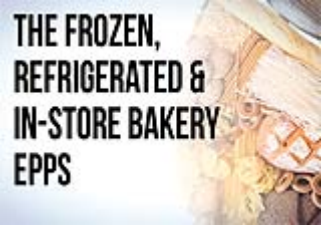Event Insights: Frozen, Refrigerated & In-Store Bakery 10/6/2015
Several years ago, Gluten-free products were relatively new, consumed primarily by people who had Celiac disease or else some level of gluten-intolerance. The taste of these products was bland, and the crumbly texture left much to be desired.
Fast forward to 2015, where technology and processes have led to the development of great tasting gluten free products that don’t fall apart in your hands, and can compete head-to-head with non-gluten-free products on taste. Add to this the fact that health-minded consumers – even those who can eat gluten – view gluten-free as better for you, and gluten free products are now mainstream, and were a key topic of discussion during the Event Debriefings – one-on-one interviews between ECRMers and attendees – during the Frozen, Refrigerated, and In-Store Bakery event held recently in San Diego.
According to recent SPINS data, gluten-free is among the fastest-growing product attributes, with sales of gluten-free products up 12 percent over last year at mass retail channels. This is particularly true among generation Z and Millennials who, according to Nielsen’s recent Healthy Eating Trends around the World study, are leaders in the gluten-free movement. According to Nielsen data, 37 percent of Generation Z respondents and 31 percent of Millennials are very willing to pay a premium for gluten-free products.
A Saturated Market?
But are there too many gluten-free products now? “There are so many gluten free foods in the marketplace,” said one attendee. “The challenge is knowing how one product stands out from the rest.” Indeed, some buyers and sellers at the event warned that the market was becoming saturated as more and more suppliers jumped on the gluten-free bandwagon. Where originally there may have been one or two brands within a particular category, now there several. Needless to say, now it’s more important than ever to differentiate, both to
For retailers, more information and messaging is needed to avoid confusion among shoppers – particularly as some products marketed as gluten-free never had gluten in them in the first place. According to the FDA:
"Whether a food is manufactured to be free of gluten or by nature is free of gluten, it may bear a “gluten-free” labeling claim if it meets all FDA requirements for a gluten-free food. Some foods and beverages, such as bottled spring water, fruits, vegetables, and eggs, are naturally gluten-free. However, because a “gluten-free” claim isn’t required to be on a food package, it may not appear even if the food is, in fact, gluten-free."
So to best serve consumers, messaging and signage that clearly defines gluten-free items (as well as those free from other allergens) is ideal. Regional grocery chain Wegman’s is a great example of a retailer with such messaging. According to a recent Progressive Grocer article, the seasonal candy aisles at Wegmans Food Markets now feature prominent signage directing shoppers to an online chart detailing gluten and major allergens, including peanuts, tree nuts, egg, dairy and soy, present in common Halloween treats. Items on the chart are listed by item description and UPC number, with a "no" in the allergen box meaning that the item doesn't contain that particular allergen.
Other trends
Gluten-free wasn’t the only trend addressed at this event, though. Here are some key trends and challenges buyers and sellers discussed during the ECRM Event Debriefings at the show:
- Ease of use: Products that simplified the consumer preparation process in some way were in greater demand, such as freezer-to-over items or fully-baked products.
- Innovative packaging: Re-sealable packaging, vacuum packaging, and other packaging that can help extend a product’s shelf life without additives. Portion controlled products – especially for snacks – are increasingly popular among shoppers, particularly parents who purchase them for their kids.
- Natural and organic: Natural, organic items continue to big, according to attendees, and are becoming more prevalent in the c-store channel, though many suppliers of these products find it difficult to get on the shelves in this channel, due to limited space.
- Chicken & Egg Crisis: Many retailers and manufacturers of poultry and products that contain eggs have been impacted by the recent Avian Flu. According to one buyer, some large egg vendors have closed shop until the beginning of 2017.
- Smaller case packs: Retailers are requesting smaller case packs for frozen items to make merchandising easier and more efficient.

